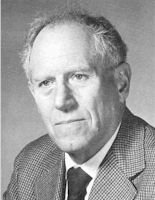Traveling Wave Tube: Difference between revisions
From ETHW
No edit summary |
m (Text replace - "[[Category:Computers and information processing" to "[[Category:Computing and electronics") |
||
| (4 intermediate revisions by 2 users not shown) | |||
| Line 1: | Line 1: | ||
'''''This article is a stub. You can help the GHN by expanding it.''''' | <p>'''''This article is a stub. You can help the GHN by expanding it.''''' </p> | ||
[[Image:Kompfner.jpg|thumb|right|Rudolf Kompfner]] | |||
[[ | <p>University of Birmingham - Birmingham, England. In November 1943 Rudolf Kompfner first demonstrated amplification of [[Radio|radio]] frequency signals with a traveling wave tube. The device made possible important advances in telecommunications technology. Travelling wave tubes lay at the heart of [[Communications Satellites|telecom satellites]] like Telstar and other systems. </p> | ||
[[Category:Computing and electronics]] | |||
[[Category:Electron_devices]] | |||
[[Category:Electron_tubes]] | |||
Revision as of 16:02, 22 July 2014
This article is a stub. You can help the GHN by expanding it.
University of Birmingham - Birmingham, England. In November 1943 Rudolf Kompfner first demonstrated amplification of radio frequency signals with a traveling wave tube. The device made possible important advances in telecommunications technology. Travelling wave tubes lay at the heart of telecom satellites like Telstar and other systems.
